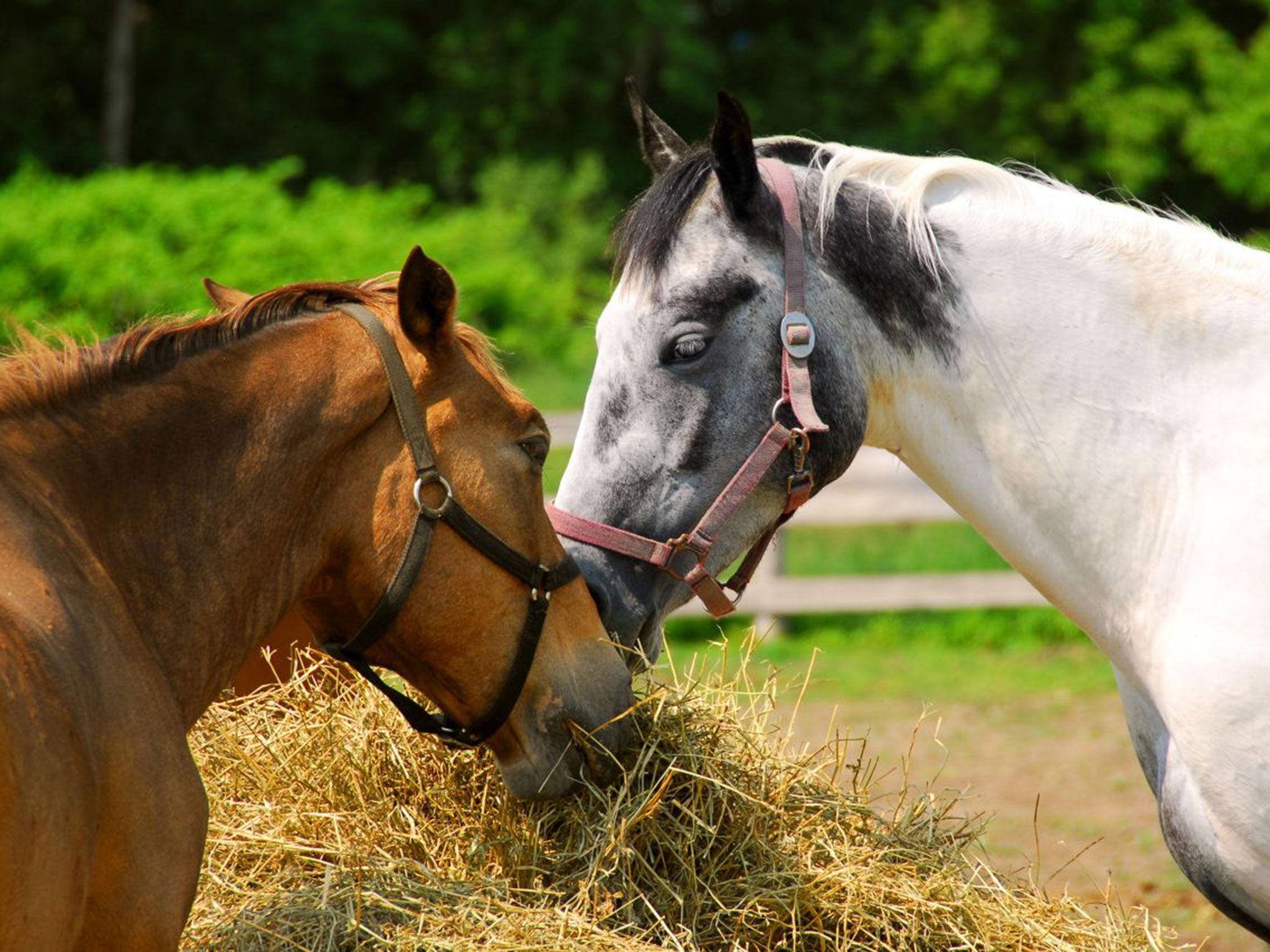Not straight from the horse’s mouth – only its eyes and ears
Scientists have discovered the secrets of equine communication

Horses have more sense than many people realise, according to scientists who have shown they are able to communicate with one another by moving their eyes as well as their ears.
A study has found that domestic horses are aware of the direction in which other horses are concentrating by looking at the gaze of their eyes and the position in which their mobile ears are pointing.
Other animals, such as monkeys and apes with forward-pointing eyes, are also known to follow the gaze of other individuals but this is the first time that researchers have shown that the ability is shared by a “prey” species with eyes on the sides of its head, the scientists said.
It is also the first time that researchers have shown that animals with wiggly ears are able to use these movements to see what it is another individual is concentrating on, said Jennifer Wathan of the University of Sussex, who carried out the research with her PhD supervisor Karen McComb.
“Our study is the first to examine a potential cue to attention that humans do not have – the ears. Previous work investigating communication of attention in animals has focused on cues that human use [such as] head orientation and eye gaze,” Ms Wathan said.
“However, we found that in horses their ear position was also a crucial visual signal that other horses respond to. In fact, horses need to see the detailed facial features of both eyes and ears before they use another horse’s head direction to guide them,” she said.
The study used full-size photographs of horses’ heads to see if equine facial features can influence the attention of another horse. The photographs were of a model horse with and without a facial mask that covered either their eyes or their ears.
“Our results provide the first evidence from an animal with laterally placed eyes that cues from this area convey important information,” the scientists say in their scientific paper published in the journal Current Biology.
“Most significantly, our results demonstrate that animals with large, mobile ears can use these as visual cue to attention. The potential role of the ears in signalling has been overlooked in previous experiments,” they say.
The researchers presented a horse with a choice of two buckets containing the same type of tasty food, but deliberately placed a headshot of another horse so that it looked as if it was concentrating on only one of the two buckets.
When the photograph showed a horse without any mask, it had a significant effect on the choice of bucket taken by the test horse. However, the photograph had no discernible effect when it showed a picture of a horse with either its eyes or ears covered, the study found.
“We see the ability of follow another individual’s gaze in a wide range of species, and we humans are particularly good at it, helped by the white sclera of the eye and the prominent brow ridges,” Ms Wathan said.
“Being able to follow the attention of another horse is really a fundamental skill and in the wild can inform you of an advancing predator or the location of a high-value food source,” she said.
“Horses use their facial cues to understand the environment around them, so it is communication in one sense. They may not need to understand why they are following another horse’s gaze. It can be a simple trigger,” she added.
Monkey talk: Animals’ nearest thing to language
Animals communicate with one another through a variety of senses – visual, auditory, olfactory or tactile – but none has been shown to have language, or at least something that can be equated with human speech.
Nevertheless, scientists have shown that some species are able to communicate quite sophisticated messages, and one study published in 2006 revealed that wild putty-nosed monkeys (pictured) even use a rudimentary form of syntax.
Making different sentences out of the same words was thought to be a unique feature of human language but in fact this species of monkey is also capable of using syntax – combining two kinds of alarm call to mean something that is quite different to either of them when used in isolation.
Normally, putty-nosed monkeys use “pyows” to warn their companions about threats from the undergrowth, such as a loitering leopard, while they shout out “hacks” when the threat is overhead.
However, when they combine the two sounds into a sequence of “pyows” and “hacks”, the monkeys understand this to mean something like “let’s go”, according to primatologists at St Andrews University.
Subscribe to Independent Premium to bookmark this article
Want to bookmark your favourite articles and stories to read or reference later? Start your Independent Premium subscription today.

Join our commenting forum
Join thought-provoking conversations, follow other Independent readers and see their replies